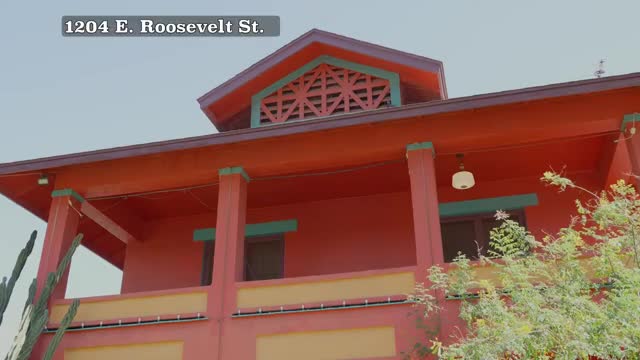Phoenix celebrates historic preservation with revitalization of Alwin House and iconic downtown buildings
December 10, 2024 | Phoenix, Maricopa County, Arizona
This article was created by AI summarizing key points discussed. AI makes mistakes, so for full details and context, please refer to the video of the full meeting. Please report any errors so we can fix them. Report an error »

The Alwin House, a historic gem in downtown Phoenix, continues to thrive as a vibrant art gallery, celebrating over five decades of creativity and community engagement. Originally built as a residence in 1912, the same year Arizona achieved statehood, the Alwin House was revitalized in 1971 by founder Kim Moody, who envisioned a space for artists to showcase their work. Today, it stands as a cultural hub in the Garfield neighborhood, blending history, technology, and artistry.
The area surrounding the Alwin House is rich in historical significance. The Arizona Canal, constructed in the mid-1880s, features a natural waterfall that has become a recreational spot for locals. This site also housed the first hydroelectric plant in the valley, which still powers homes today while serving as an educational resource for the community.
The legacy of James H. McClintock, a prominent figure in Phoenix's early history, is also celebrated. His contributions include co-founding the Arizona Republic and identifying the site for the Roosevelt Dam. His former residence, now preserved, allows residents to connect with the city's past.
In addition to the Alwin House, the area boasts the oldest commercial building in Phoenix, established in 1885. This historic site has housed various businesses over the years and was listed on the National Register of Historic Places in 1985. Thanks to the efforts of Mayor Gallego and the city's historic preservation team, these buildings remain accessible to the public, ensuring that the stories of Phoenix's rich heritage continue to be shared.
The revitalization of the Warehouse District highlights the importance of preserving cultural landmarks. Buildings like the Gerardo Building and the J.W. Walker Building reflect the area's diverse history, from Hispanic businesses to early department stores. These structures not only serve as reminders of the past but also contribute to the ongoing development of Phoenix's vibrant community.
As the city embraces its history, events celebrating these landmarks are set to engage residents and visitors alike, fostering a deeper appreciation for Phoenix's unique cultural tapestry.
The area surrounding the Alwin House is rich in historical significance. The Arizona Canal, constructed in the mid-1880s, features a natural waterfall that has become a recreational spot for locals. This site also housed the first hydroelectric plant in the valley, which still powers homes today while serving as an educational resource for the community.
The legacy of James H. McClintock, a prominent figure in Phoenix's early history, is also celebrated. His contributions include co-founding the Arizona Republic and identifying the site for the Roosevelt Dam. His former residence, now preserved, allows residents to connect with the city's past.
In addition to the Alwin House, the area boasts the oldest commercial building in Phoenix, established in 1885. This historic site has housed various businesses over the years and was listed on the National Register of Historic Places in 1985. Thanks to the efforts of Mayor Gallego and the city's historic preservation team, these buildings remain accessible to the public, ensuring that the stories of Phoenix's rich heritage continue to be shared.
The revitalization of the Warehouse District highlights the importance of preserving cultural landmarks. Buildings like the Gerardo Building and the J.W. Walker Building reflect the area's diverse history, from Hispanic businesses to early department stores. These structures not only serve as reminders of the past but also contribute to the ongoing development of Phoenix's vibrant community.
As the city embraces its history, events celebrating these landmarks are set to engage residents and visitors alike, fostering a deeper appreciation for Phoenix's unique cultural tapestry.
View full meeting
This article is based on a recent meeting—watch the full video and explore the complete transcript for deeper insights into the discussion.
View full meeting
